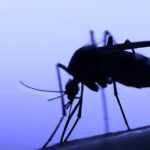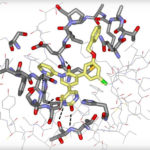Yale researchers detect tumor-reactive immune cells in blood
Scientists have found a method to isolate specialized T cells in cancer patients, which could help in clinical monitoring of tumors.

Yale News
Researchers at the Yale School of Medicine have isolated from blood samples specialized immune cells that attack tumors and could serve as a way to monitor the success of cancer treatments.
Department of Neurology Chair David Hafler, who was a senior author in the study, explained that since tumors have markers that identify them as foreign to the body, the immune system will naturally produce tumor infiltrating lymphocytes, or TILs, to attack them. These T cells will trigger an immune response by releasing inflammatory molecules, making them a reliable marker of how the body is responding to the cancer.
According to Liliana Lucca, a post-doctoral student in the Department of Neurology and first author of the study, the motivation behind the investigation was to find a way to detect the TILs in blood, isolate them and compare their characteristics to TILs extracted from tumor samples. This would allow scientists and doctors to more fully comprehend the unique characteristics of a specific tumor without needing an invasive biopsy.
“We know that in a number of circumstances, obtaining a sample of tumor is quite difficult,” Lucca said. “If you want to know how the immune system is behaving towards the tumor in general, it would be useful to have a way to identify the [T cell] population in the blood.”
The authors used tumor and blood samples to isolate T cells present in the tumor, and compared the genetic sequence of the T cells’ receptors to that of T cells found in the blood. To accomplish this, they utilized a technique called single-cell RNA sequencing, which identifies messenger RNA molecules present in the T cell and provides information on the genes active in the cell, as well as the identity of the T cell’s receptor.
“What we discovered is that the T cells in the blood have a killer function, while the ones present in the tumor are exhausted and turned off,” Hafler explained. “We may have developed a method for following the response to the treatment by measuring the cells in the blood.”
According to Harriet Kluger, professor of medical oncology and another co-author on the study, when sequencing TILs in melanoma patients, the researchers found that patients treated with immunotherapy had a higher incidence of the “exhausted” T cells present in the tumor. This would indicate that the body is developing a greater immune response to the tumor and producing large amounts of T cells.
Kluger and Lucca explained that one of the challenges during the research process was obtaining viable tumor samples to perform the sequencing on. Samples had to be collected from cancer patients via biopsy, which usually requires surgery.
“As with many technologies, platforms evolve rapidly while sample collection might lag behind,” Kluger wrote in an email to the News. “The COVID19 pandemic resulted in delays in [non-essential] surgeries.”
The authors explained that, while it is still very early in the research process, their findings could have important applications in a clinical setting. According to Hafler, the ability to detect T cells in the blood and identify them as TILs could help doctors evaluate whether a given treatment is working.
Overall, this method could be used to reduce the number of invasive biopsies and provide a reliable method of understanding a tumor’s behavior in the body.
“These cells can be further studied in a longitudinal fashion in additional patients treated with immunotherapy to determine whether this … approach can be used to monitor patients on immunotherapy and determine whether they are likely to respond or not early in the course of treatment,” Kluger wrote in an email.
However, the researchers still face one major hurdle in the path toward clinical applications. Single-cell RNA sequencing is still an extremely expensive and elaborate technique and can therefore only be performed in specialized settings.
According to Hafler and Lucca, the next step in the process is to develop an easier and more cost-effective technique that could be used by doctors and scientists when treating patients. According to Hafler, it currently costs over ten thousand dollars to analyze each sample using single-cell RNA sequencing.
“That’s a big challenge,” Hafler said. “Can we go from this incredibly complex, non-applicable to clinical use technique to a relatively simple standard one that can be done in the clinical laboratory?”
According to the Commission on Cancer, surgical biopsies can cost thousands of dollars.
Beatriz Horta | beatriz.horta@yale.edu










